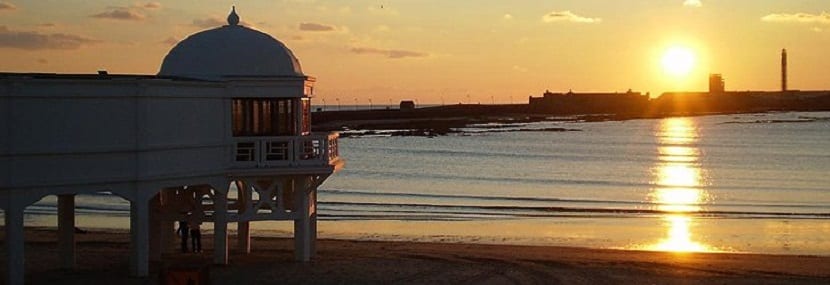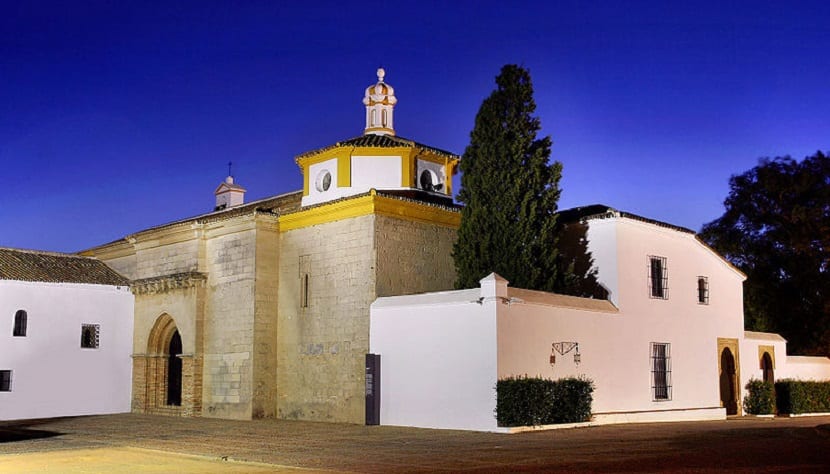
La Rabida Monastery
As we told you yesterday in the article "Reasons to get lost on the Andalusian Western Coast (I)" We were not going to stop in Huelva but we were going to continue our trip along the Cadiz coast, but before continuing, we are going to talk to you about the things that were left in the inkwell in the last article, such as some of the Colombian places that you we narrate below.
Columbian sites
Next to the mouth of the Tinto, in Punta del Sebo, the monument to Colón, emblem of modern Huelva and the gateway to the route that takes us to La Rabida Monastery and Colombian places like Palos de la Frontera y mogur.
The Monastery of La Rabida is an ancient Franciscan convent built on an Almohad building on a hill where the Phoenicians had built an altar and the Romans a temple. In the presbytery there are the remains of Martín Alonso Pinzón.
In Palos is the Church of San Jorge Mártir, of Gothic-Mudejar style and in whose square the Royal Pragmatic of the Catholic Monarchs was read ordering the city to rig two caravels. For its setting known as «The bride and groom» The sailors of Palermo left, heading for the unknown, on August 2, 1492.
In Moguer, you can visit the Convento de Santa Clara, where Columbus prayed upon his return, the Zenobia's house and Juan Ramón Jiménez Museum. And if we have to show you places and towns in the inland area of Huelva, you can't stop visiting Fog and its castle, Aracena and its Grotto of Wonders, Trigueros and its Soto dolmen.
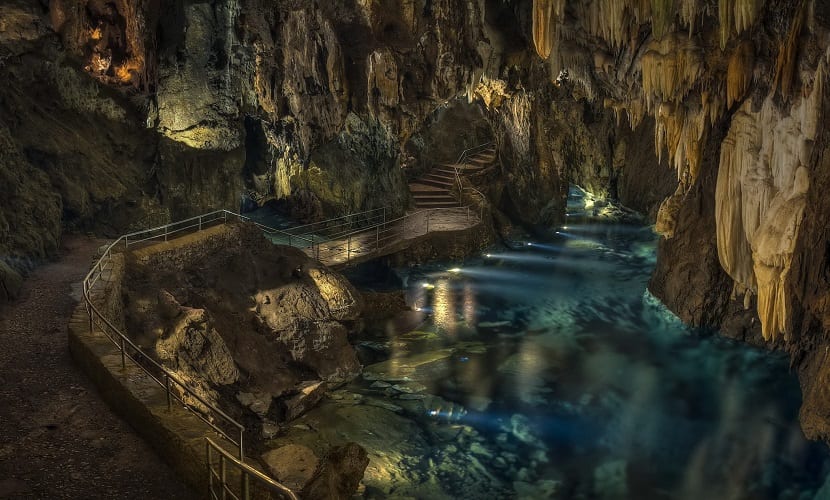
Cave of Wonders in Aracena
And if you want to get lost in more areas of the Huelva coast, you should visit the beaches of Matalascañas and Mazagón, both very crowded in summer.
The Doñana preserve
The Doñana preserve is unique in Europe, as it houses an enormous amount of biodiversity in a variable ecosystem. Variable because there is not only one but there are several, especially the marsh area, a place of passage, breeding and wintering for many migratory birds that pass through there. There is another area that is the Park, where unique species live, many of them in danger of extinction such as the lynx or the imperial eagle.
There are also the ecosystems of dunes, preserves and beaches. But Doñana is not to describe it, Doñana is undoubtedly to visit. Today excursions are made throughout the preserve, either on horseback, undoubtedly one of the most splendid and others in buses or cars organized by different companies in the surrounding towns.
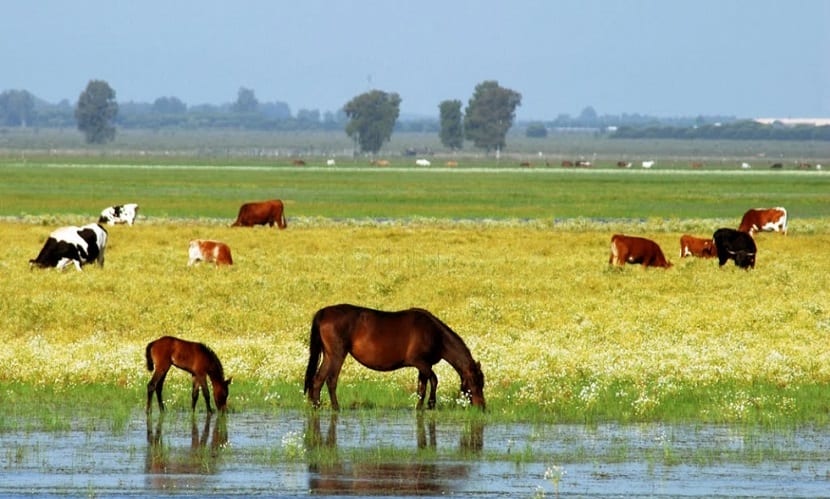
Entering through Jerez de la Frontera (Cádiz)
To Jerez, the town where the wine and horse culture predominate. If you pass through this magnificent and charming municipality you must visit their wineries (Garvey, Sanderman's, etc.). It is also a must stop the Andalusian School of Equestrian Art, where it is shown how the jackfruits known throughout the world as the Carthusian race dance. Nearby is the Horse and Wine Museum, and passing through Jerez means motorcycles, noise and many fans of the motor world. This is where one of the largest concentrations of motorcycles and bikers in all of Spain takes place, almost always coinciding with the days before the Jerez Motorcycle Grand Prix.
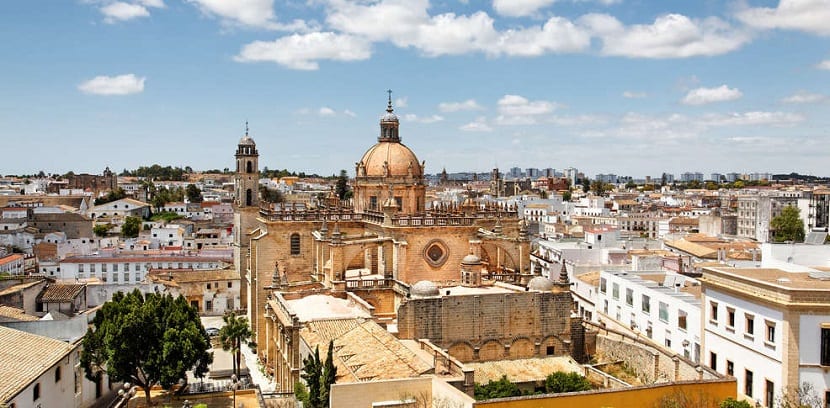
Jerez de la Frontera
El alcazar, Archaeological Museum and Zoological Park They can also be perfect visits to carry out together with the little ones.
El Puerto de Santa María, located at the bottom of the bay, from which the first trade in the Indies would start, has a wonderful marina and urbanization of Puerto Sherry of which to enjoy.
The «Silver Cup»
Cádiz, the oldest city in the West, preserves countless vestiges in its Provincial Museum (from paintings by Murillo or Rubens to collections from both the Neolithic and Paleolithic). The Cathedral is the most significant of its monuments with its golden domes, as you can see in the following image. The Castillo de San SebastianThat of Santa Catalina and the well known Earth Gate, they show signs of how warlike this Andalusian land was.
The Cadiz coastline stretches from low white sand beaches to The Caños de Meca, riding a Barbate. Where tuna, melva and bonito are fished. Fishing and seafaring city, definitely.
One of the most visited beaches in the place is undoubtedly Bolonia, where in addition to bathing you can admire the Claudia Baelo Romana, one of the most complete and best-preserved archaeological sites in Roman Hispania, which includes the capitol, thermal baths, aqueduct and necropolis.

Panoramic of Bolonia Beach
La tarifeña coast it is also a paradise for those who enjoy sport fishing and scuba diving. both sports activities with great fans in the area.
If we keep walking we will stop Weighs de la Frontera, one of the most beautiful villages in Andalusia due to its monumental complex with an unmistakable Arab flavor, narrow streets and white houses. A town that will undoubtedly surprise the traveler who can enjoy it.
We hope that this walk along the Andalusian western coast has pleased you and has encouraged you to get to know it if you have never been to it. It will be a beautiful and unforgettable trip, we guarantee it.
